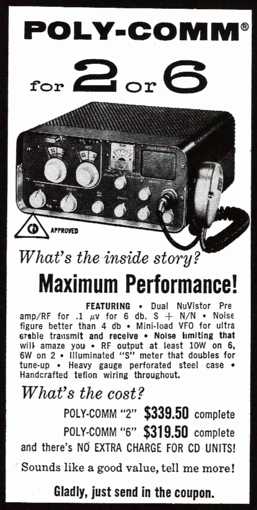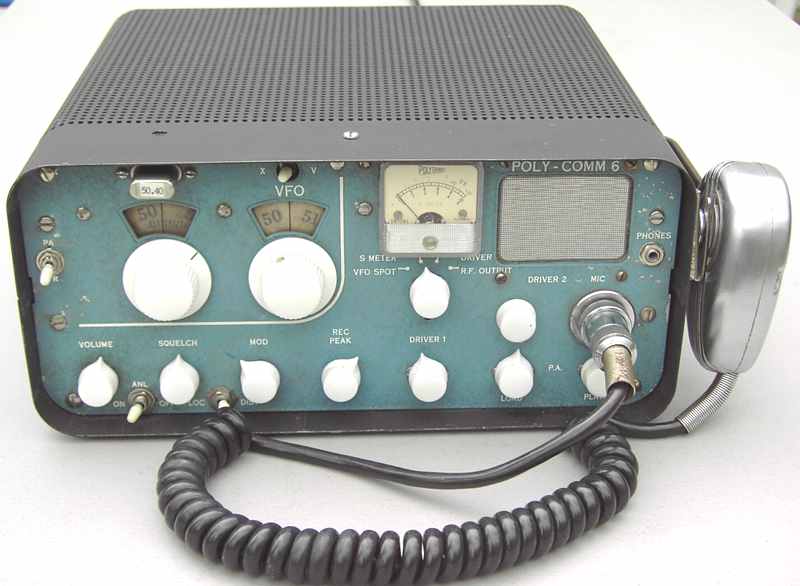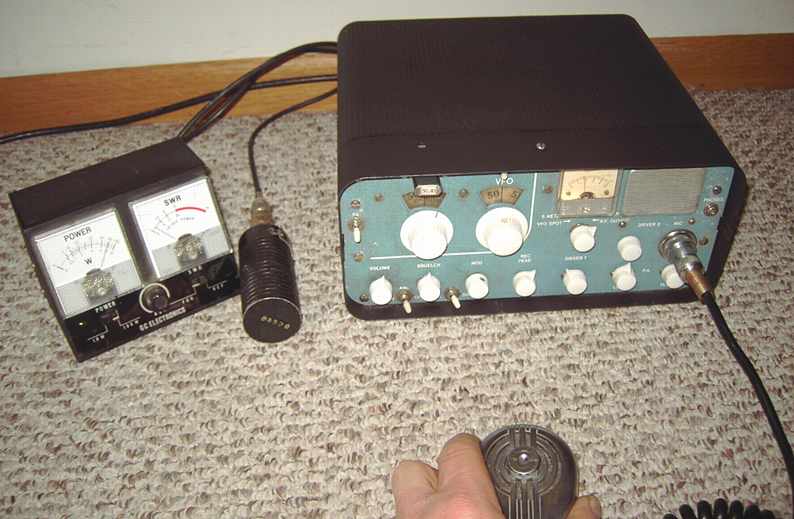
Designed for the 6 meter ham radio band, the Poly-Comm 6 Transceiver can be crystal-controlled or used with its built-in VFO. The transceiver was manufactured by Polytronics Lab Inc. of Clifton, New Jersey.
With its built-in vibrator, it can be operated from either 115 volts AC or 12 volts DC. The set's 16 tubes include 3 nuvistors as cathode-coupled RF amps and as mixer. RF output was specified at 10 watts. Two 6BQ5 audio tubes are used for plate modulation.

Price was $319.50, relatively steep for 1962-63.
A review can be found in the April 1963 issue of QST magazine. The review notes, "the transmitter stability being as good as will be found in any but the very best VFO transmitters on 50 Mc .... Receiver sensitivity is adequate and the selectivity is all that one could use comfortably in mobile or casual home-station operation."

Repairs
The volume control was intermittent and the power cord was missing. The previous owner did not have the correct power cord for the set. An eleven pin "octal" plug (sub magnal) as used by Heath was directly soldered onto the Jones connector blades with heat shrink tubing covering the connections. I removed the modification and located a proper 10 pin Jones female connector for a new three-wire shielded power cord. Otherwise the set needed very little repair. The intermittent volume control and the other controls were cleaned with deoxit.
Power output specs
The RF output tube for the Polycom 6 is a 7551 with a rated RF output of about 10 watts. I measured actual output into a 50 ohm dummy load variously between 9 and 10 watts, close enough given the accuracy of my meter.

On the air tests
I checked into the local 6 meter net with the set. Both the audio and transmit power level received positive comments. I found the selectivity to be quite sharp compared to my old reliable Gonset Communicator II. That required some retuning for those stations with crystals that were a bit off the mark. However sensitivity was excellent. The small internal speaker limits audio quality to some extent. I connected an external computer speaker to the rear-panel terminal strip on the PolyComm. That greatly improved the sound quality.
I also noticed that the unit generated considerable heat on the left side which contains most of the receiving tubes including the nuvistors. While that amount of heat is normal given the compact nature of the set, I will place a small computer fan on top of the cabinet to help with cooling.
6-8-08
A Heathkit FM-2 tuner circa 1950 was the previous item on the bench.